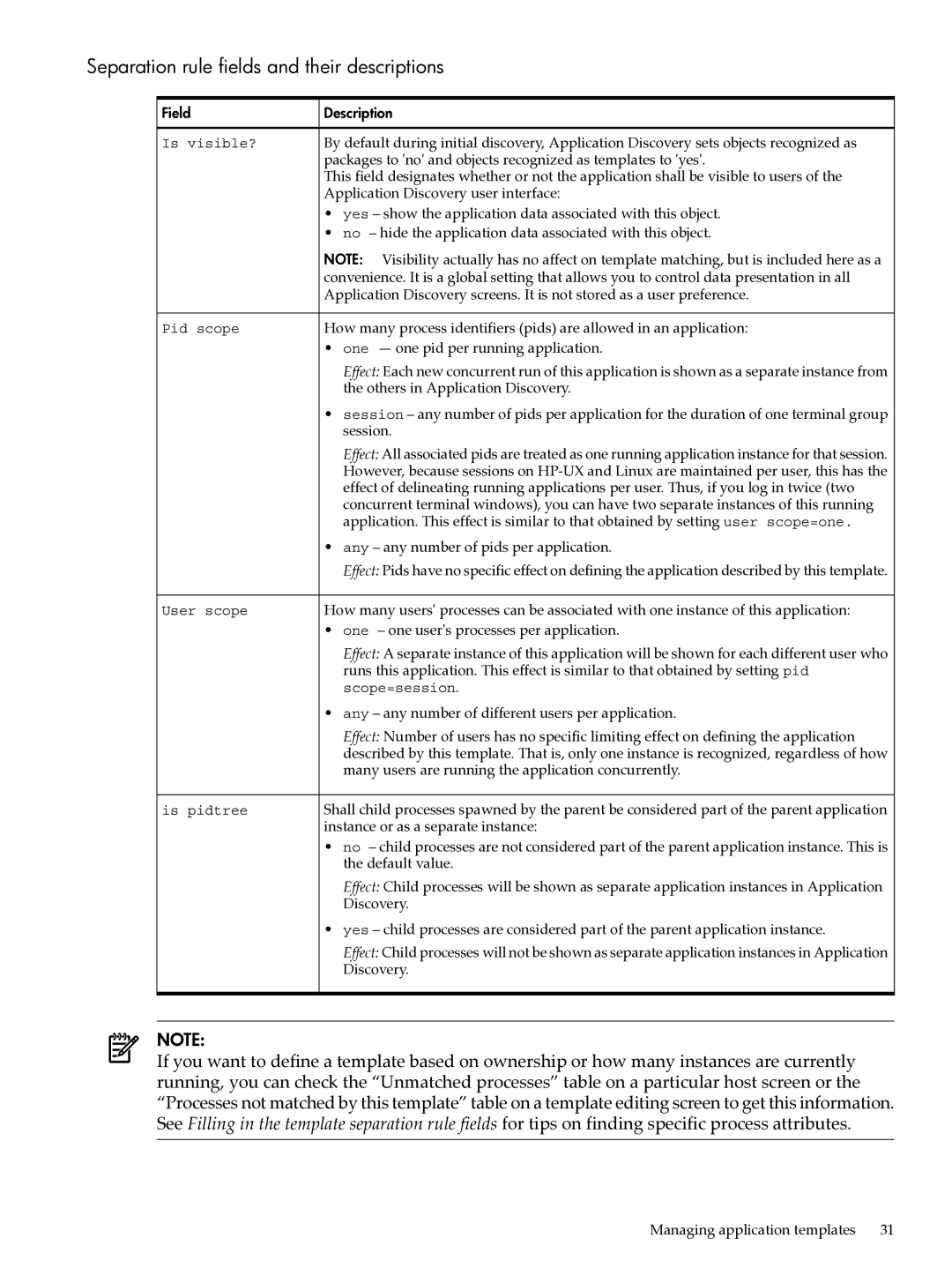
Separation rule fields and their descriptions
![]() Field
Field![]() Description
Description
Is visible? By default during initial discovery, Application Discovery sets objects recognized as packages to 'no' and objects recognized as templates to 'yes'.
This field designates whether or not the application shall be visible to users of the Application Discovery user interface:
•yes – show the application data associated with this object.
•no – hide the application data associated with this object.
NOTE: Visibility actually has no affect on template matching, but is included here as a convenience. It is a global setting that allows you to control data presentation in all Application Discovery screens. It is not stored as a user preference.
Pid scope | How many process identifiers (pids) are allowed in an application: |
| • one — one pid per running application. |
| Effect: Each new concurrent run of this application is shown as a separate instance from |
| the others in Application Discovery. |
| • session – any number of pids per application for the duration of one terminal group |
| session. |
| Effect: All associated pids are treated as one running application instance for that session. |
| However, because sessions on |
| effect of delineating running applications per user. Thus, if you log in twice (two |
| concurrent terminal windows), you can have two separate instances of this running |
| application. This effect is similar to that obtained by setting user scope=one. |
| • any – any number of pids per application. |
| Effect: Pids have no specific effect on defining the application described by this template. |
User scope | How many users' processes can be associated with one instance of this application: |
| • one – one user's processes per application. |
| Effect: A separate instance of this application will be shown for each different user who |
| runs this application. This effect is similar to that obtained by setting pid |
| scope=session. |
| • any – any number of different users per application. |
| Effect: Number of users has no specific limiting effect on defining the application |
| described by this template. That is, only one instance is recognized, regardless of how |
| many users are running the application concurrently. |
is pidtree | Shall child processes spawned by the parent be considered part of the parent application |
| instance or as a separate instance: |
| • no – child processes are not considered part of the parent application instance. This is |
| the default value. |
| Effect: Child processes will be shown as separate application instances in Application |
| Discovery. |
| • yes – child processes are considered part of the parent application instance. |
| Effect: Child processes will not be shown as separate application instances in Application |
| Discovery. |
NOTE:
If you want to define a template based on ownership or how many instances are currently running, you can check the “Unmatched processes” table on a particular host screen or the “Processes not matched by this template” table on a template editing screen to get this information. See Filling in the template separation rule fields for tips on finding specific process attributes.
Managing application templates 31
